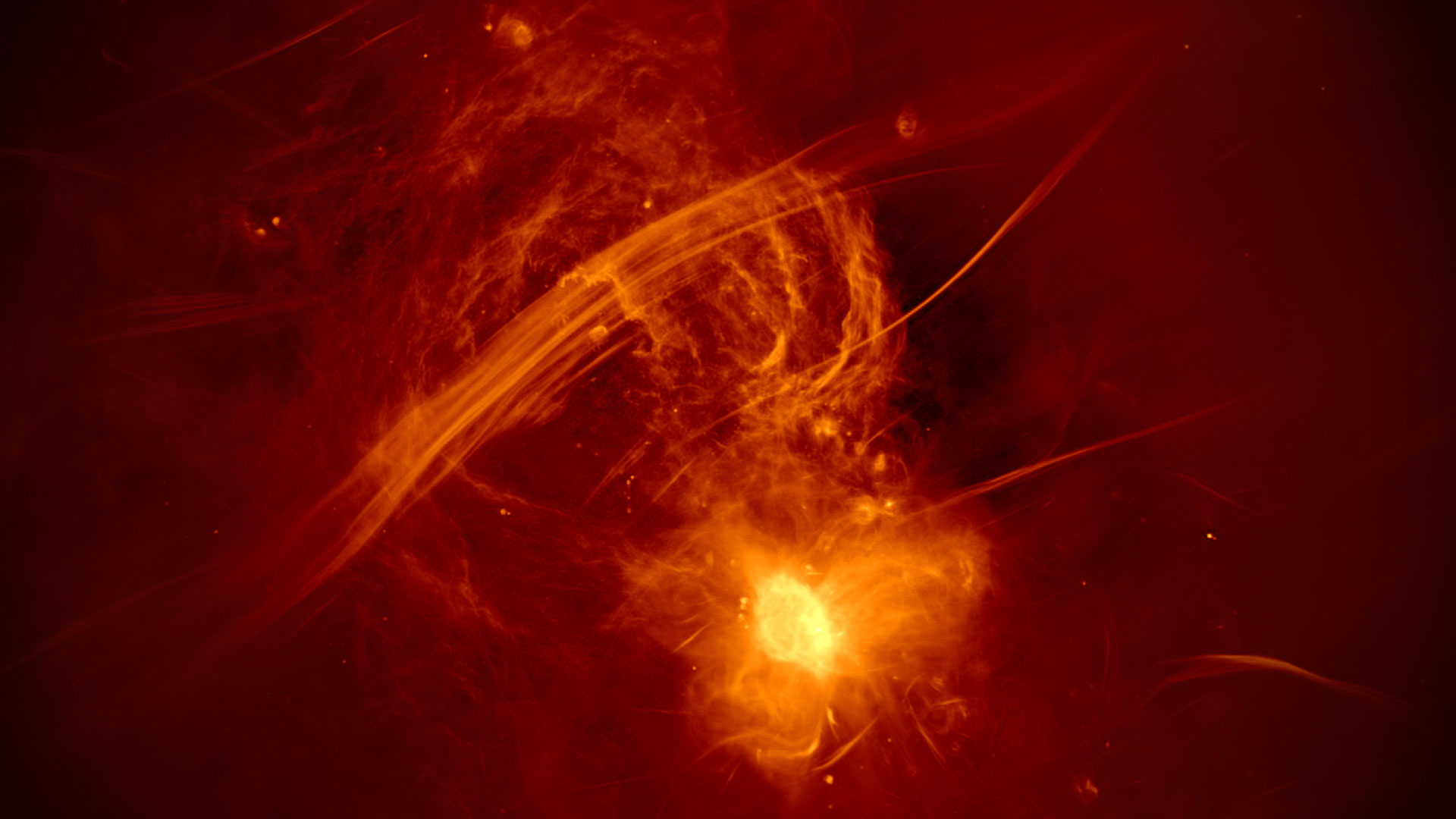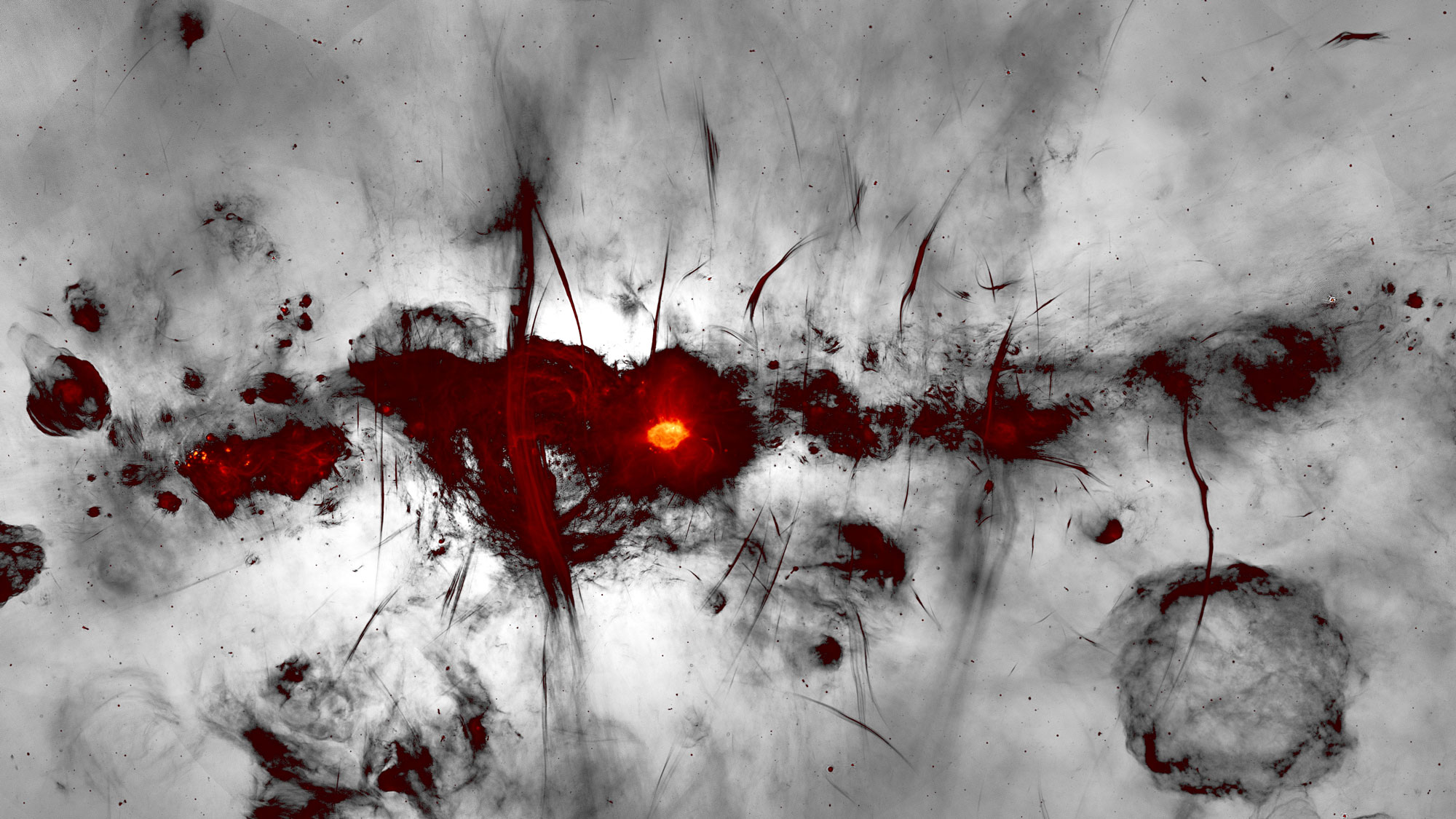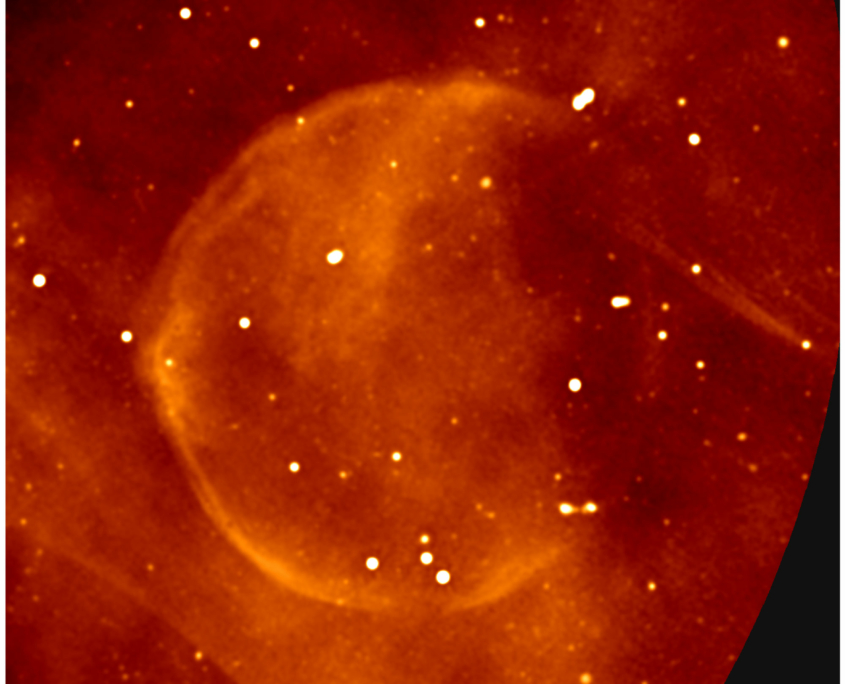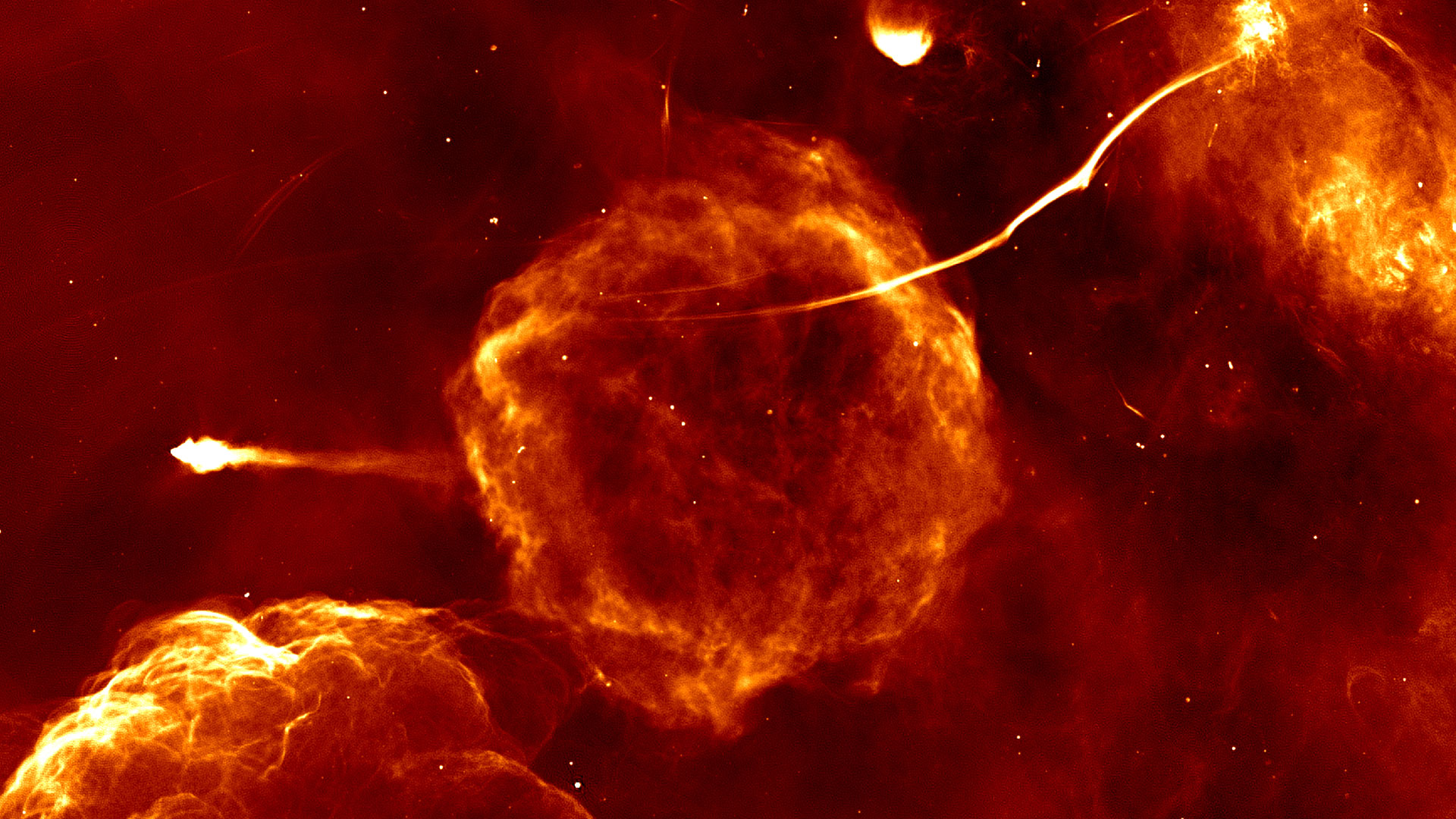New Milky Way mosaic reveals nearly 1,000 strange 'filaments' at the heart of our galaxy

An unprecedentedly detailed new telescope image of the complex heart of our galaxy is now giving researchers their best view yet of hundreds of strange magnetic filaments seen nowhere else.
To construct the image, astronomers used 200 hours of time on the South African Radio Astronomy Observatory's (SARAO) MeerKAT telescope. Consisting of 64 antennas spread over a diameter of 5 miles (8 kilometers), MeerKAT is the most sensitive radio telescope in the world.
Radio waves penetrate the intervening dust that obscures the view of this region at other wavelengths of light. The scientists combined 20 separate radio observations covering an area of the sky about 30 times the area of the full moon into a 100-megapixel mosaic of unprecedented clarity and depth, revealing the center of the Milky Way galaxy, which is located about 25,000 light-years from Earth.
Related: MeerKAT telescope opens its eyes to hundreds of new galaxies

The new mosaic captures radio details from a menagerie of cosmic phenomena, such as new supernova remnants — the expanding shells of material left behind when massive stars end their lives explosively — including a rare, almost perfectly spherical example at the edge of the mosaic.
The image also includes stellar nurseries, outbursting stars and the chaotic region around the supermassive black hole that lurks in the Milky Way's core, called Sagittarius A*, which has about 4 million times the mass of the sun. Numerous compact sources of radio waves are also visible, many of which may be supermassive black holes at the centers of galaxies far beyond ours.
"I've spent a lot of time looking at this image in the process of working on it, and I never get tired of it," astrophysicist Ian Heywood at the University of Oxford in England and lead author of a new study on the new image, said in a statement. "When I show this image to people who might be new to radio astronomy, or otherwise unfamiliar with it, I always try to emphasize that radio imaging hasn't always been this way, and what a leap forward MeerKAT really is in terms of its capabilities. It's been a true privilege to work over the years with colleagues from SARAO who built this fantastic telescope."
Get the Space.com Newsletter
Breaking space news, the latest updates on rocket launches, skywatching events and more!

The new mosaic has also revealed nearly 1,000 mysterious strands that stretch up to 150 light-years long and possess strong magnetic fields. These filaments are found in pairs and clusters, often stacked equally spaced, side by side like strings on a harp.
These magnetic filaments have defied a conclusive explanation for their origins ever since astrophysicist Farhad Yusef-Zadeh at Northwestern University in Evanston, Illinois, first discovered them more than 35 years ago. Now the new image has revealed 10 times more filaments than were previously known, which could help yield enough data to help Yusef-Zadeh and his colleagues finally unravel this longstanding puzzle.
"We have studied individual filaments for a long time with a myopic view," Yusef-Zadeh, the lead author of a new study on the filaments, said in the same statement. "Now, we finally see the big picture — a panoramic view filled with an abundance of filaments. Just examining a few filaments makes it difficult to draw any real conclusion about what they are and where they came from. This is a watershed in furthering our understanding of these structures."
These new findings confirm that all these strands each possess a magnetic field "much higher than what we usually expect from the galaxy," Yusuf-Zadeh told Space.com. Now "we need a theoretical model to explain how the magnetic field is amplified to such high values."
Previously, Yusef-Zadeh and his colleagues found the radio emissions from these cosmic strands came from high-energy cosmic ray particles that collided with the magnetic fields of the filaments. These encounters forced the particles to gyrate at close to the speed of light, generating radio waves.
"It is a million-dollar question where exactly the cosmic rays came from," Yusuf-Zadeh said.

Much else remains unknown about these filaments, such as whether they move or change over time. Still, the new findings do reveal the wavelengths of light the filaments emit vary far more than what is seen from supernova remnants, suggesting they have different origins. Instead, they may have links to past activity of the Milky Way's central supermassive black hole, or a pair of giant radio bubbles that Yusef-Zadeh and his collaborators discovered in 2019, evidence of an explosive outburst from the heart of our galaxy several million years ago, the researchers said.
"This is the first time we have been able to study statistical characteristics of the filaments," Yusef-Zadeh said in the statement. "By studying the statistics, we can learn more about the properties of these unusual sources.
"If you were from another planet, for example, and you encountered one very tall person on Earth, you might assume all people are tall," he added. "But if you do statistics across a population of people, you can find the average height. That's exactly what we're doing. We can find the strength of magnetic fields, their lengths, their orientations and the spectrum of radiation."
Among the remaining mysteries surrounding the filaments is how structured they appear. Filaments within clusters are separated from one another at perfectly equal distances — about the distance from Earth to the sun.
Intriguingly, "solar activity produces loops of filaments that are very close to each other and are separated from each other," Yusef-Zadeh said. "But the origin of solar loops are completely different ... we are talking about much much larger scales in the galactic center."
All in all, when it comes to the magnetic filaments in the galactic core, "we still don't know why they come in clusters or understand how they separate, and we don't know how these regular spacings happen," Yusef-Zadeh said in a statement. "Every time we answer one question, multiple other questions arise."
The researchers are currently identifying and cataloging each filament, noting details such as their angle, curve, magnetic field, spectrum and intensity. Understanding these properties may give the astrophysics community more clues into the filaments' elusive nature.
"We're certainly one step closer to a fuller understanding," Yusef-Zadeh said in a statement. "But science is a series of progress on different levels. We're hoping to get to the bottom of it, but more observations and theoretical analyses are needed. A full understanding of complex objects takes time."
The scientists detailed their image of the Milky Way's center in a study accepted for publication in The Astrophysical Journal. They detailed their findings on the filaments in a study accepted for publication in The Astrophysical Journal Letters.
Follow us on Twitter @Spacedotcom and on Facebook.
Join our Space Forums to keep talking space on the latest missions, night sky and more! And if you have a news tip, correction or comment, let us know at: community@space.com.

Charles Q. Choi is a contributing writer for Space.com and Live Science. He covers all things human origins and astronomy as well as physics, animals and general science topics. Charles has a Master of Arts degree from the University of Missouri-Columbia, School of Journalism and a Bachelor of Arts degree from the University of South Florida. Charles has visited every continent on Earth, drinking rancid yak butter tea in Lhasa, snorkeling with sea lions in the Galapagos and even climbing an iceberg in Antarctica. Visit him at http://www.sciwriter.us









